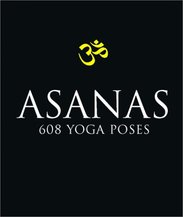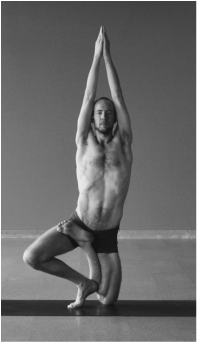|
Our culture encourages certain ways of being, whether through short-term trends or long-term traditions and generally accepted values.
Being thin is a generally accepted value in our culture. All of our advertisements feature thin people, our movie stars are thin, we all strive to be thin. So it is easy for us to want to be thin, strong and healthy because our culture appreciates and admires thin, strong, healthy people. Many people begin in yoga because of the physical fitness it offers. We feel the desire (cultural or otherwise) to be thin and beautiful, so we exercise. Eating in moderation is more difficult because our culture encourages binge eating, high-sugar and high-fat foods and alcohol consumption, all of which are bad for the body and mind. But it is cool to eat poorly and self-destructively. I have heard yoga teachers who encourage alcohol consumption, overeating and even being overweight. Vegetarians and vegans are still outliers, though less than they were in years past. Restaurants often have a token vegetarian option amidst an entire menu of meat-centered choices. I find these two cultural values to be in conflict with each other. We want to be healthy, but we also feel the desire to binge eat and drink. They create internal confusion as we are encouraged to be thin and drink beer or wine, drink soda and eat hamburgers and ice cream.
0 Comments
 One of the first yoga books I ever saw was Asanas: 608 Yoga Poses. A small, thick black book with one pose on every page. With very little in the way of method or explanation, the power of the book is in its simplicity and its comprehensive list of postures. There are easily recognizable poses, almost infinite variations on those poses, and also poses I have never seen before. Studying the book is like experiencing the mind of a yogi: playful but traditional, adventurous but respectful. The man in all the pictures, Dharma Mittra, wrote a brief introduction, and in doing so illuminated a fundamental nature of yoga and of being. The quote below is from the introduction of Asanas: 608 Yoga Poses. It is said that yoga takes the shape of all of creation. There are an infinite number of poses - this is what makes yoga a living tradition.Three thousand years ago yoga started with one meditative pose, Easy Lotus. The word asana originally meant "meditative posture." Then the masters introduced Cobra Pose to keep the spine flexible. In their quest for physical health they developed the eight most important poses to insure the health of the body and glands. From there it grew. Even today dozens of new poses are created each year by true yogis all over the world. There are many different schools, each with their own variations, but basically all yoga comes from the same set of classic asanas. In the 30 years I have been teaching I have developed many poses, but in yoga no one puts his or her name on a pose because in reality I didn't do anything. I am just a body through which the intuition has passed. In my studies of Patanjali's Yoga Sutra, I recently read Chapter 1, Verse 30. It outlines the obstacles on the path to Self-Realization. I find the verse to be incredible helpful and enlightening. Below is the verse and my commentary on it. (It also can be found in the Yoga Sutra section of this website.) Nine kinds of distractions come that are obstacles naturally encountered on the path, and are 1) physical illness, 2) tendency of the mind to not work efficiently, 3) doubt or indecision, 4) lack of attention to pursuing the means of samadhi, 5) laziness in mind and body, 6) failure to regulate the desire for worldly objects, 7) incorrect assumptions or thinking, 8) failing to attain stages of the practice, and 9) instability in maintaining a level of practice once attained. 1) Physical Illness - We always say "at least you have your health," because without physical health, we are unable to focus our attentions on anything other than our misery and disease. This is why Asana/Postures are so prevalent in the early yoga practice. They heal and strengthen the body, enabling us to move further down the path of self-realization. A good diet also plays an important role in physical health.
2) Tendency of the mind to not work efficiently - We know this by another name: distraction. Our thoughts can become diluted, unclear, wandering. Distraction leads to an overactive mind, one that has trouble accomplishing tasks and achieving goals. 3) Doubt or indecision - Each choice we make has many alternate possibilities. When we choose, it is important to be considerate without being indecisive. It is the nature of decisions, especially difficult ones, that we can choose many paths. When we choose, we should do so clearly and without delay, moving forward without looking back or trying to make the same decision over and over again. 4) Lack of attention to pursuing the means of samadhi - Even if we are healthy, focused and decisive, we will make limited progress toward self-realization unless we put effort specifically into its pursuit. 5) Laziness in mind and body - We all know this one. No matter how good it feels when we practice, make progress, read and learn, it is so easy to choose rest, apathy and laziness. Avoiding laziness is a discipline that we must demand of ourselves, both physically and mentally. 6) Failure to regulate the desire for worldly objects - Our culture idolizes those with money, big houses, vacations, power, beauty and attention. So the desire for these worldly things is almost bred into us. But these things do not change who we are. Worse, they clutter, distract and confuse us, keeping us from making spiritual progress. Worldly objects and focus actually prevent us from self-realization. With this realization, freedom from worldly desires becomes easier. 7) Incorrect assumptions or thinking - This is easy enough to understand in theory. When we believe things that aren't true, our actions and progress will be limited or in the wrong direction. The difficult part is finding where our thinking is incorrect. The only way that I know to do that is constant learning and exploration. We must always be ready to revise or change our views as we learn new things. We should seek the best information possible, and be very critical in what we choose to assimilate into our personal systems of belief. 8) Failing to attain stages of the practice - We must always be growing and progressing toward self-realization. We shouldn't let ourselves become stagnant in our habits or practices, because even good practices can turn into barriers with too much mindless repetition. We should also seek teachers who can guide us further on the path. 9) Instability in maintaining a level of practice once attained - Through laziness or simple inconsistency, it isn't difficult to backslide once we have achieved a certain level of practice. We should strive to maintain our practice and also to grow beyond it. With so many Handstands, Forearm Balances, Jump Backs and gravity-defying positions, sometimes yoga seems like a form of acrobatics. And with so many pretzel shaped postures, backbends, feet touching the head, deep twisting and bending, sometimes yoga seems like a form of contortionism. In truth, though yoga postures can flirt with the same territory as Acrobatics and Contortionism, it is neither.
The goal of the yoga postures is to put the mind and body in a unified place. It is not to bend deeply or go upside down or even to be strong, flexible or in shape. The inverse is actually true. These characteristics of the postures affect the relationship between the body and mind. Try balancing on your head or on your hands. Yes, it is unnatural, and that is the point. It demands complete focus and presence. If there is even a flicker of distraction the posture falls apart. That is why yoga contains the "acrobatics" - to bring us fully into the present and into our bodies. The deep flexibility required by some yoga postures, like putting the feet behind the head or even sitting in Lotus, has more of an energetic concern. To open the body to that degree, the mind and body must relax completely. Often the poses that require significant flexibility deal with the rotation of the hips. By rotating the hips, we access a tremendous pool of energy that sits at the base of our spine. Opening the hips unlocks the energy and sends it up the spine into our brains and the tops of our heads, where our spiritual centers lie. With so many physical demands in the yoga practice, it is easy to think that it is a physical practice, but it is not. Each physical position is meant to create alignment between our body, mind and spirit. |
This journal honors my ongoing experience with the practice, study and teaching of yoga.
My FavoritesPopular Posts1) Sridaiva Yoga: Good Intention But Imbalanced
2) Understanding Chair Posture 2) Why I Don't Use Sanskrit or Say Namaste 3) The Meaningless Drudgery of Physical Yoga 5) Beyond Bikram: Why This Is a Great Time For Ghosh Yoga Categories
All
Archives
November 2017
|


 RSS Feed
RSS Feed